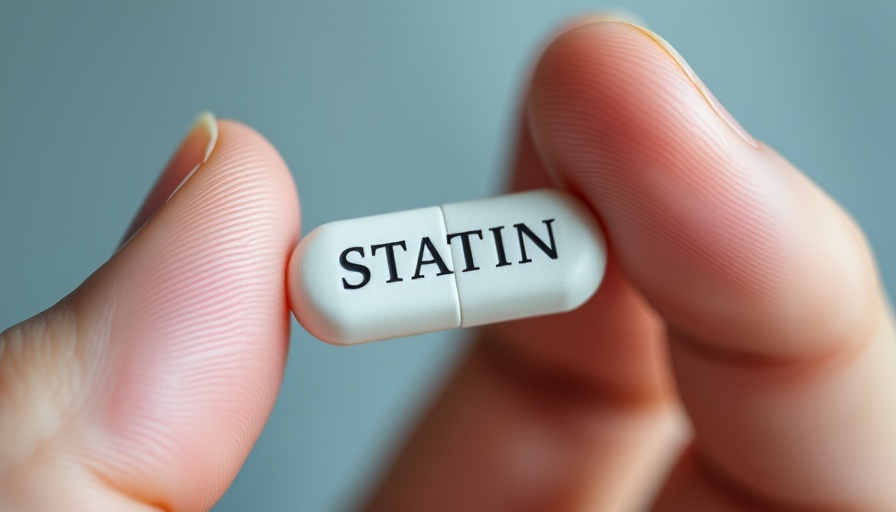
Understanding Statins and Muscle Pain: A Common Concern
Statins, commonly prescribed to lower low-density lipoprotein cholesterol (LDL-C), have a critical role in preventing cardiovascular diseases, which remain the leading cause of death worldwide. Despite their efficacy, many patients struggle with adherence to statin therapy, primarily due to reported muscle pain associated with the medication. A recent analysis indicates that up to 72% of adverse events related to statins are muscle-related, leading to a significant dropout rate among users.
The Mystery of Statin-Associated Muscle Symptoms (SAMS)
Research highlights a dramatic contrast between clinical trial reports and real-world experiences. While trials show low incidences of side effects, individuals taking statins often cite muscle pain as the primary reason for discontinuation. A staggering three-quarters of patients may stop their medication altogether due to discomfort, raising questions about both the physical and psychological factors influencing their experiences. Some experts argue that the perception of statin side effects may be primarily psychosocial rather than pharmacological.
Can Psychological Factors Influence Statin Side Effects?
The nocebo effect emerges as a significant player in the discussion around statin-related muscle pain. A study demonstrated that when participants were unaware of whether they were taking a statin or a placebo, reports of muscle discomfort were notably lower. These findings suggest that simply being informed about the treatment can induce negative expectations, leading to reported side effects. This phenomenon underlines the need for clear communication between healthcare providers and patients about the potential adverse effects of statin therapy.
Implications for Patient Education and Acceptance
It's crucial for healthcare professionals to address patients' fears and misconceptions surrounding statins. Open dialogues that educate patients on the benefits of statins and the nature of side effects may help reduce anxiety and improve adherence to therapy. The real-world data serve not only as a warning but as a call to action for better engagement between healthcare providers and patients.
Exploring Alternatives: Are There Effective Options?
For individuals who experience persistent statin-related muscle pain, there are alternative strategies. Some studies suggest lifestyle modifications, including increased physical activity and dietary adjustments, can enhance heart health without the need for medication. Moreover, other cholesterol-lowering approaches, such as dietary supplements like omega-3 fatty acids, may also provide relief without the side effects associated with statins.
Real-Life Impact of Statin Discontinuation
For health-conscious individuals and caregivers, understanding the broader implications of statin discontinuation is invaluable. The consequences of stopping these medications can be profound, leading to increased health risks and potential cardiovascular events. It is essential to weigh the benefits of adherence to statins against the reported side effects and to ensure that individuals are equipped to make informed decisions about their health.
Final Thoughts: Empowering Patients to Take Charge
In the face of conflicting information and personal experiences, patients must feel empowered in their treatment journeys. Clear communication, education, and biological understanding can help mitigate misunderstandings surrounding statin therapy. As we navigate the complexities of muscle pain related to statins, a unified approach between patients and healthcare providers remains crucial.
 Add Row
Add Row  Add
Add 




Write A Comment